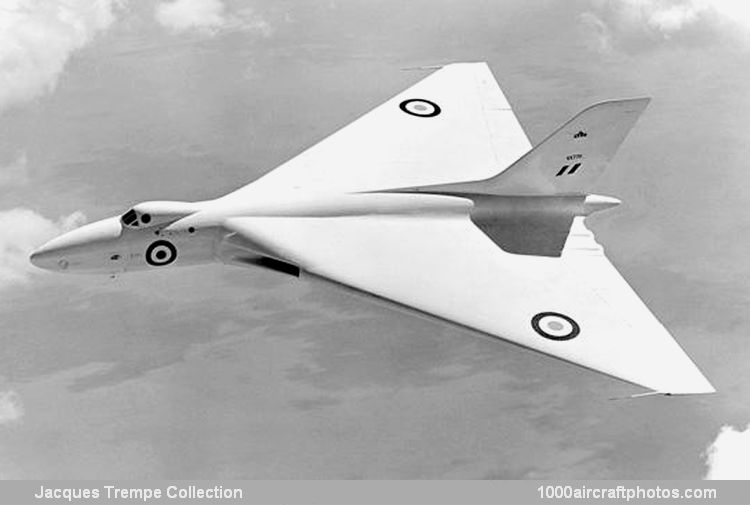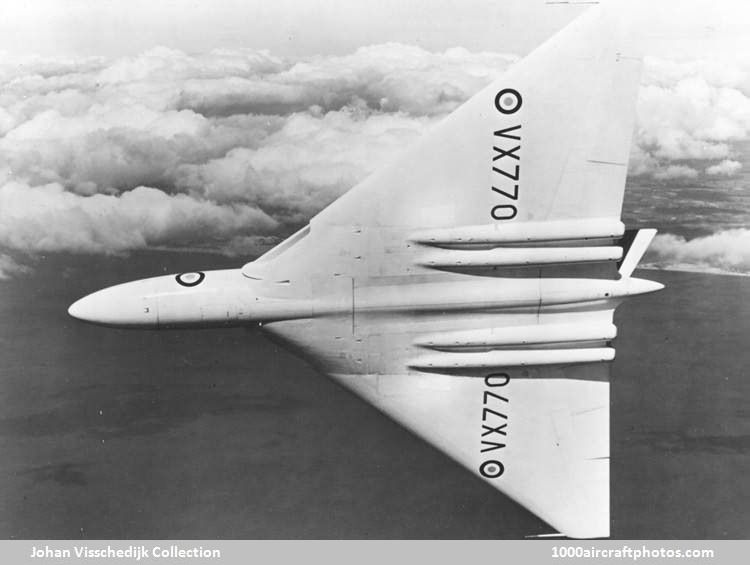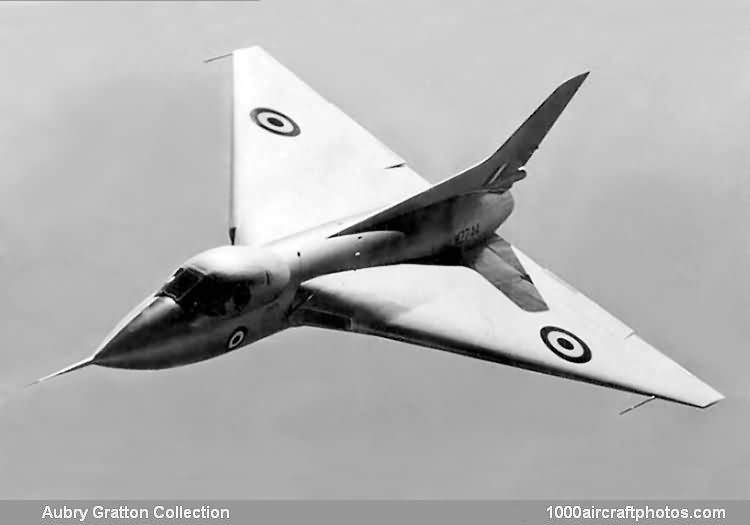09/30/2012. Remarks by
Johan Visschedijk: "Developed to a 1947 Air Staff requirement calling for a high-altitude bomber to carry a nuclear warload at speeds approaching Mach 1, the Vulcan was the world's first large delta wing aircraft. Radical departure from convention enabled Roy Chadwick to design an aircraft which met an exacting specification yet at the same time was comparatively small and landed relatively slowly. The Avro tender was accepted on November 27, 1947, and the design was completed in the following September.
Of all-metal, stressed skin construction, the wing was some 7 ft (2.13 m) thick at the root end enabling drag to be kept to a minimum by enclosing engines, landing gear, fuel and bomb load entirely within it. Trailing edge flaps were unnecessary as landings were made at high angles of attack and defensive armament was neither needed nor fitted.
Although unusual in appearance the Vulcan was structurally orthodox with two-spar mainplane, backward retracting nose wheels, forward retracting eight wheel bogie main units, and turbojets grouped close to the center line. A conventional rudder was hinged to a swept fin but the other controls consisted of two pairs of ailerons and elevators on the trailing edge of the wing, with gate-type air brakes extending above and below. A braking parachute was fitted as standard.
(
Johan Visschedijk Collection)
Due to the unavailability of the Bristol Olympus turbojets for which it had been designed, the first Vulcan prototype (s/n VX770) was completed with four 6,500 lb (2,948 kg) st Rolls-Royce Avon R.A.3s and first flown on August 30, 1952 by Avro Chief Test Pilot R.J. Falk, who startled the aviation world by rolling it at the Farnborough SBAC Show a few days later.
Avro 707C (WZ744) (
Aubry Gratton Collection)
Such success derived from Avro's far sighted test program with five small Avro 707 delta wing research aircraft which were, in effect, third scale models. They gave valuable data on the Vulcan's probable flight characteristics, and two of them, the all-red Avro 707A (s/n WD280) and all-blue Avro 707B (s/n VX790), emphasized the docility of deltas by flying a patriotic formation with the all-white Vulcan prototype during its SBAC debut. The second Vulcan prototype (s/n VX777) was first flown on September 3, 1953, and appeared a few days later at the Farnborough SBAC Show in formation with the first prototype and the four remaining Avro 707s.
VX770 reappeared at the 1954 Show with 8,000 lb (4,037 kg) st Armstrong Siddeley Sapphires and in 1957 with Rolls-Royce Conways. The long-range Vulcan 'V-Bomber' was ordered into quantity production for the RAF before the prototypes had flown and production models (commencing XA889, first flown on February 4, 1955), were powered by four 9,750 lb (4,23 kg) st Bristol Olympus (first fitted to the second prototype) and were made slightly longer in the nose to avoid the need for shortening the nose leg prior to retraction.


